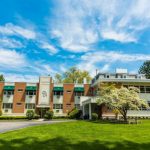Like any business, SNF funding is competitive. Lenders go to great lengths to stand out in a crowded marketplace. However, Cambridge Realty Capital President Andrew L. Erkes urges SNF borrowers to look past the “bells and whistles” and discern what is behind the perceived success of a lender. “Bells and whistles are attractive, initially,” he contends, “but may actually be only a distraction from the real business of financing senior living and skilled care, which requires a substantial amount of experience in senior living/SNF funding in order to deliver real results.”
It can be challenging as an SNF borrower to evaluate and compare lenders, especially if you’re a first-time borrower, or if your situation is complex or less than straightforward in some way. Then again, says Erkes, every SNF operator’s circumstances, and therefore their loan applications, are unique, and “less-than-straightforward” is more the norm rather than the exception. So how do operators tune out the bells and whistles, get past the smoke and mirrors, and find a loan provider that can actually deliver desirable results while still providing a realistic outlook and managing expectations? It all comes down to experience.
How Do You Measure Experience?
Lenders may portray an era of success in many ways, such as a well-appointed, stylish office or luxury cars in the parking lot. However, Erkes asserts, “real success is evidenced by closures, and closures happen because the lender has experience. Nothing is more important than experience and closed transactions…especially in the ever-changing world of finance and government financing mixed together, in terms of HUD funding for senior living.” He continues, “For years, and continuing moving forward, Cambridge is the answer; we possess the unique combination of experience in closed transactions to yield confidence for any owner.”
Cambridge’s experience has not changed since the late 1990s. Just look at the numbers:
*Over 550 closed HUD loans.
*Total closings of over $6.5 billion dollars.
*A servicing portfolio of approximately 200 loans totaling $2 billion dollars, almost exclusively consisting of senior housing assets and skilled nursing facilities.
Cambridge has the unique perspective of both a lender to and an investor in assisted living, skilled nursing, and senior living. Being familiar with and enmeshed in both sides of the business means Cambridge knows what issues have the potential to become roadblocks during the loan application process and what investors and other stakeholders need to see in order to feel confident that an applicant is risk-worthy.
And Then There’s HUD
The HUD loan process brings with it its own set of unique challenges that require a different kind of attention than applying for a conventional loan. A given lender may present a set of numbers regarding closed deals, but those numbers may not tell the whole story. A lender which doesn’t regularly work with HUD will be less familiar with the stringent, precise requirements for obtaining HUD funding.
Cambridge has specialized in HUD funding since the mid 1980’s. “There isn’t an issue we haven’t encountered with HUD,” Erkes quipped, including government shutdowns and even seemingly trivial concerns like outdated septic systems. “We go to the mat for our applicants,” Erkes states. “When Cambridge works with clients, Cambridge becomes the consultant, advisor, interpreter, problem solver, and roadblock eliminator…all in one.
From start to finish the owner has no direct conversation with the government and has the primary responsibility of just sharing the punch list of documentation to begin the process.” With Cambridge’s many years and extensive experience working with HUD, they are able to address and solves all roadblocks before they occur. “This all-inclusive service that Cambridge provides is especially unique in a specialized world,” Erkes finishes.




